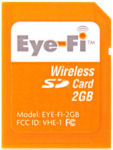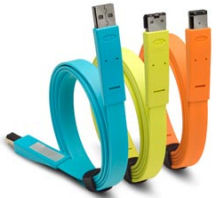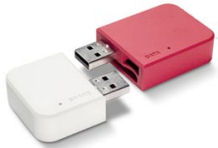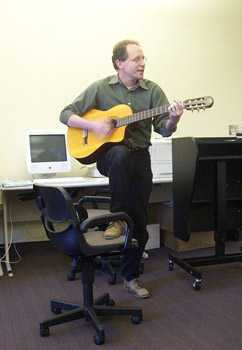 Netbook computers are coming along fast as a viable alternative to traditional notebooks -- significantly smaller, lighter, and less expensive (around 2 to 3 pounds, $300 to $500). Yes, they're underpowered and have less capacity, but they work fine for keeping in touch with e-mail and Web browsing, and for basic office tasks. (Photo: Verizon / HP Mini compared to a traditional notebook)
Netbook computers are coming along fast as a viable alternative to traditional notebooks -- significantly smaller, lighter, and less expensive (around 2 to 3 pounds, $300 to $500). Yes, they're underpowered and have less capacity, but they work fine for keeping in touch with e-mail and Web browsing, and for basic office tasks. (Photo: Verizon / HP Mini compared to a traditional notebook)
Plus, with both Wi-Fi and mobile cellular broadband service, netbooks can provide the convenience of that connectivity almost anywhere, so you can access larger stores of your documents and your media files in the Internet cloud.
But netbooks are not just competing with notebooks, they're also an alternative to smartphones / PDA phones that also provide Internet connectivity and personal data access on the go. Smartphones are easier to carry along in your pocket and are great for quickly checking e-mail or a website, but a netbook offers a larger screen and keyboard for more extended work (see previous post: Netbook or Notebook).
So just as the cellular carriers offer discounted pricing for mobile phones and smartphones in the U.S., as long as you sign up for an extended service plan, they are starting to do the same for netbook devices.
 This week, for example, Verizon Wireless announced that it is selling the HP Mini 1151NR netbook like its other phones -- It's available for $199.99, after a $50 mail-in rebate and a new two-year activation on a mobile broadband plan.
This week, for example, Verizon Wireless announced that it is selling the HP Mini 1151NR netbook like its other phones -- It's available for $199.99, after a $50 mail-in rebate and a new two-year activation on a mobile broadband plan.
The HP Mini 1151NR has a 10.1" display, is 10.3 x 6.6 x 1 inch and 2.4 pounds. It has an integrated webcam, and uses the Intel Atom N270 processor, with 1 GB memory and 80 GB hard drive. It runs Windows XP Home Edition and comes with desktop software including Microsoft Works and Outlook Express. (A similarly equipped HP Mini 1000 prices out to around $439.)
But the other detail is the monthly data service plan -- Verizon offers two plans, for "moderate" and "heavy" users, each with a basic monthly allowance of megabytes of data transferred, and then an additional per-megabyte charge for usage beyond the allowance. (You can also add international coverage.)
- Moderate plan - $39.99 / mo. for 250 MB allowance [~16 cents/MB], 10 cents/MB addl.
- Heavy plan - $59.99 / mo. for 5 GB (5,120 MB) [~1.2 cents/MB], 5 cents/MB addl.
But who has any idea how many megabytes they are using when accessing e-mail and attachments, or browsing Web pages with photos, much less audio or video? Verizon lists some approximate data usage examples, including: typical web page lookup at 300 kb, low resolution digital photo at 500 KB, and PowerPoint presentation (20 pages text & light graphics) at 3 MB.
So on the order of 1000 Web pages, 500 low-res photos, or 100 PowerPoint presentations over a month would blow through the "moderate" plan. And downloading podcasts at 10's of megabytes and YouTube videos at 1/3 to 2/3 MB per second (see Jan Ozer in PC Mag) will add up even faster.
As a result, looking for Wi-Fi hotspots is still important even when you have mobile broadband service, at least for doing large transfers and enjoying entertainment sites like YouTube and Hulu.
The Verizon high-speed network service (EV-DO Rev A) also is slower than typical Wi-Fi service, running at DSL-like typical rates of 600 Kbps to 1.4 Mbps for downloads and 500 to 800 Kbps for uploads.
Even so, it's great to be able to set up a netbook almost anywhere and be instantly online, doing your e-mail and checking in on the Web.
See my Portable Communications Gallery for information on netbooks and smartphones.
 Find the Verizon Wireless - HP Mini 1151NR on Amazon.com
Find the Verizon Wireless - HP Mini 1151NR on Amazon.com
 Someday our digital cameras will have built-in wireless to do all this automatically, but until then you can use an Eye-Fi card -- a clever combination of a standard SD memory card with built-in Wi-Fi technology (see previous posts).
Someday our digital cameras will have built-in wireless to do all this automatically, but until then you can use an Eye-Fi card -- a clever combination of a standard SD memory card with built-in Wi-Fi technology (see previous posts).![]() Find the
Eye-Fi Share Video and
Eye-Fi Explore Video
on Amazon.com
Find the
Eye-Fi Share Video and
Eye-Fi Explore Video
on Amazon.com

 The
The  For example, the
For example, the  And the
And the  And now there's the
And now there's the  These are stylish speakers for PC or Mac that conveniently plug in to your computer's USB port and just work. They're plug and play, with no additional drivers needed. And they're powered over the USB connection, so no additional AC adapter or batteries are required.
These are stylish speakers for PC or Mac that conveniently plug in to your computer's USB port and just work. They're plug and play, with no additional drivers needed. And they're powered over the USB connection, so no additional AC adapter or batteries are required. Netbook computers are coming along fast as a viable alternative to traditional notebooks -- significantly smaller, lighter, and less expensive (around 2 to 3 pounds, $300 to $500). Yes, they're underpowered and have less capacity, but they work fine for keeping in touch with e-mail and Web browsing, and for basic office tasks. (Photo: Verizon / HP Mini compared to a traditional notebook)
Netbook computers are coming along fast as a viable alternative to traditional notebooks -- significantly smaller, lighter, and less expensive (around 2 to 3 pounds, $300 to $500). Yes, they're underpowered and have less capacity, but they work fine for keeping in touch with e-mail and Web browsing, and for basic office tasks. (Photo: Verizon / HP Mini compared to a traditional notebook) This week, for example,
This week, for example,  The new Dell Inspiron Mini 10v also has a 10-inch display, but starts at 2.5 pounds and $299. [Photo courtesy of Dell Inc.]
The new Dell Inspiron Mini 10v also has a 10-inch display, but starts at 2.5 pounds and $299. [Photo courtesy of Dell Inc.] One nice answer is the
One nice answer is the 

 The reason, and the evening's speaker, was
The reason, and the evening's speaker, was